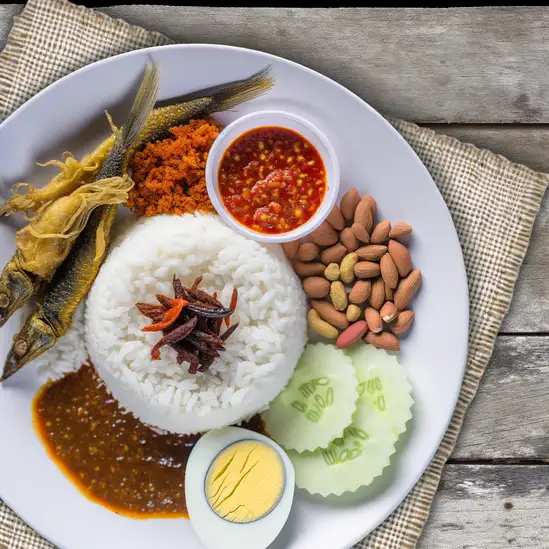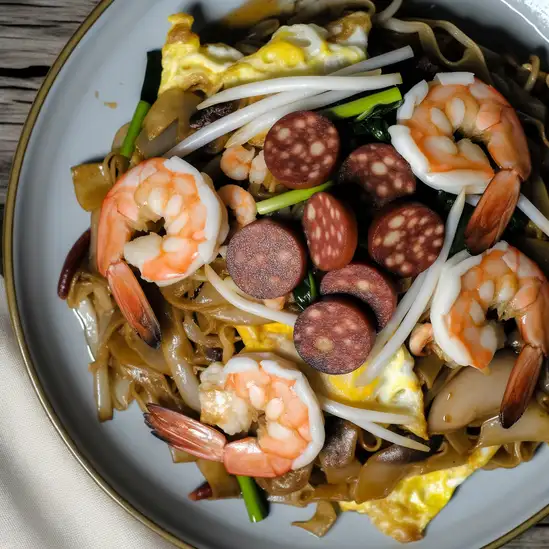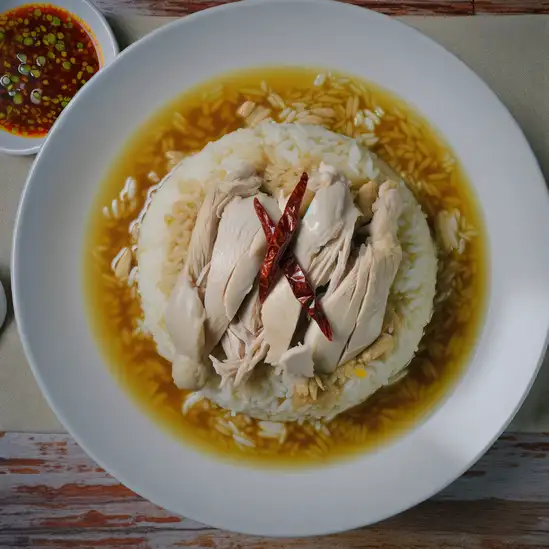


Kuala Lumpur feels like a vibrant heartbeat pulsing through the heart of Malaysia—where tradition and modernity dance effortlessly together. The moment you step into the city,you’re greeted by the towering silhouettes of the Petronas Twin Towers piercing the sky,their glass facades shimmering against the tropical sun. But it’s not just the skyline that captivates you; it’s the lively street scenes below. The air buzzes with the chatter of street vendors,the sizzle of satay grilling over open flames,and the sweet aroma of pandan and lemongrass wafting from bustling food stalls. Walking through neighborhoods like Bukit Bintang or Chinatown,you’ll find a kaleidoscope of colors and sounds—vibrant markets brimming with spices,textiles,and handcrafted trinkets,while the calls to prayer from nearby mosques blend harmoniously with the hum of city life. The city’s rich cultural tapestry is woven from Malay,Chinese,and Indian influences,creating a unique blend you can taste in every bite of nasi lemak or teh tarik. What I love most is how Kuala Lumpur never feels rushed. Whether you’re sipping kopi at a roadside stall or wandering through the lush greenery of the KL Forest Eco Park,there’s a warm,welcoming energy that invites you to slow down and soak it all in. It’s a city that surprises you at every turn—full of contrasts,flavors,and stories waiting to be discovered.
The information on this page is currently being reviewed by Tripkliq and should be used as a guide only
Eng word: Hello
Eng pronunciation: Ha-lo
Local language: Halo
Eng word: Goodbye
Eng pronunciation: Se-la-mat ting-gal
Local language: Selamat tinggal
Eng word: Thank you
Eng pronunciation: Te-ri-ma ka-sih
Local language: Terima kasih
Eng word: How much
Eng pronunciation: Be-ra-pa
Local language: Berapa
Eng word: Toilet
Eng pronunciation: Tan-das
Local language: Tandas
Eng word: Help me
Eng pronunciation: To-long sa-ya
Local language: Tolong saya
Eng word: Yes
Eng pronunciation: Ya
Local language: Ya
Eng word: No
Eng pronunciation: Ti-dak
Local language: Tidak
Eng word: Excuse me
Eng pronunciation: Ma-af
Local language: Maaf
Kuala Lumpur was founded in 1857 by Chinese tin miners. The name 'Kuala Lumpur' means 'muddy confluence,' referring to its location at the confluence of the Gombak and Klang rivers.
Completed in 1897, the Sultan Abdul Samad Building is one of Kuala Lumpur's most iconic landmarks. It served as the administrative center during British colonial rule and now houses the Ministry of Information, Communications, and Culture.
The Petronas Twin Towers, completed in 1998, were the tallest buildings in the world until 2004. Standing at 452 meters, they remain the tallest twin towers globally and are a symbol of Malaysia's rapid modernization.
Merdeka Square, or Independence Square, is where the Union Jack was lowered, and the Malaysian flag was raised for the first time on August 31,1957, marking Malaysia's independence from British rule.
Batu Caves, located just outside Kuala Lumpur, is a limestone hill with a series of caves and cave temples. It is one of the most popular Hindu shrines outside India, dedicated to Lord Murugan.
Built in 1910, the Kuala Lumpur Railway Station is a beautiful example of Moorish architecture. It served as the city's main railway hub until the opening of KL Sentral in 2001.
Masjid Jamek, built in 1909, is one of the oldest mosques in Kuala Lumpur. It is located at the confluence of the Klang and Gombak rivers, the birthplace of the city.
Central Market, or Pasar Seni, was established in 1888 as a wet market. Today, it is a cultural and heritage site where visitors can shop for traditional Malaysian crafts and souvenirs.
The Kuala Lumpur Tower, completed in 1995, is a telecommunications and broadcasting tower. At 421 meters, it offers panoramic views of the city and houses a revolving restaurant.
In Kuala Lumpur, the most common Power Adaptor is Type G.


Considered the national dish of Malaysia, Nasi Lemak is a fragrant rice dish cooked in coconut milk and pandan leaf, served with anchovies, peanuts, boiled egg, cucumber, and sambal (spicy chili paste).

A popular stir-fried noodle dish made with flat rice noodles, prawns, cockles, Chinese lap cheong (sausage), eggs, bean sprouts, and chives, cooked in a dark soy sauce.

A type of Indian-influenced flatbread that is crispy on the outside and soft on the inside, typically served with dhal (lentil curry) or curry sauce for dipping.

A simple yet flavorful dish consisting of poached chicken served with fragrant rice cooked in chicken broth, accompanied by chili sauce, ginger paste, and soy sauce.

A spicy noodle soup with a coconut milk or sour asam (tamarind or gelugur) base, typically containing noodles, prawns, chicken, tofu puffs, and bean sprouts.
Imagine stepping into a city where sleek skyscrapers meet lush greenery,and every corner hums with a vibrant energy that’s both modern and deeply rooted in tradition. That’s Singapore for you—a place where the air carries the fragrant mix of blooming orchids and sizzling street food,and the streets buzz with a blend of languages and laughter. Walking through neighborhoods like Chinatown or Little India,you’ll catch the rich aromas of spices mingling with the sweet scent of tropical fruits,inviting you to explore further.
What’s truly captivating about Singapore is how effortlessly it balances the fast-paced pulse of a global hub with pockets of serene beauty. You can be wandering through the futuristic Gardens by the Bay one moment,marveling at the towering Supertrees glowing softly at dusk,and the next,find yourself savoring a bowl of laksa or chili crab at a bustling hawker center,surrounded by locals chatting animatedly. The city’s character shines through its people—warm,diverse,and proud of their heritage,yet always welcoming.
There’s a rhythm here that’s both energizing and comforting. Whether you’re cycling along the waterfront,catching a sunset over Marina Bay Sands,or simply sipping kopi in a cozy café,Singapore invites you to slow down and soak in its unique blend of cultures,flavors,and sights. It’s a city that surprises you with its layers,making every visit feel like a new discovery.
Bangkok is one of those cities that grabs you the moment you step out into its bustling streets. There’s this electric energy in the air—a mix of honking tuk-tuks,sizzling street food stalls,and the chatter of locals weaving through markets. The city feels alive,like it’s constantly moving and breathing,yet somehow it balances this chaos with moments of serene beauty,like the golden spires of temples catching the afternoon sun or quiet canals reflecting the sky.
Walking through Bangkok,you’ll be hit by a whirlwind of scents:fragrant jasmine from flower vendors,the sharp tang of lemongrass and chili from street carts,and the sweet aroma of mango sticky rice tempting you at every corner. The colors are just as vivid—neon signs flicker alongside traditional wooden shophouses,and monks in saffron robes glide past modern skyscrapers. It’s a city where old and new dance together effortlessly.
What really makes Bangkok special is its warmth and openness. The people here have a genuine kindness that shines through,whether you’re bargaining at Chatuchak Market or sharing a laugh over a bowl of spicy boat noodles. The culture is rich and layered,from the intricate rituals at Wat Pho to the lively festivals that light up the streets. Visiting Bangkok feels like stepping into a story that’s still unfolding,full of surprises and moments that stay with you long after you leave.
Imagine stepping into a place where the air hums with the gentle rhythm of waves lapping against sun-warmed shores,and the scent of salty sea mingles with fragrant street food stalls. That’s Phuket for you—a vibrant island that feels alive in every sense. It’s not just the stunning beaches that grab you,but the way the island pulses with a laid-back energy,where colorful markets buzz with chatter and the aroma of grilled seafood fills the air. Walking through the old town,you’ll find charming Sino-Portuguese buildings painted in pastel hues,their shutters creaking softly in the tropical breeze,while tuk-tuks zip by,adding a playful soundtrack to your explorations.
Phuket’s character is a beautiful blend of tradition and liveliness. Temples with golden spires peek out from lush greenery,inviting quiet moments of reflection,while nearby,night markets burst with life—vendors calling out,sizzling woks,and the sweet tang of mango sticky rice tempting your taste buds. The island’s culture is warm and welcoming,with locals who smile easily and share stories over cups of strong Thai coffee or fresh coconut water.
What makes Phuket truly special is how it wraps you in its embrace—whether you’re watching a fiery sunset from a cliffside bar,diving into crystal-clear waters teeming with vibrant marine life,or simply savoring the spicy kick of a freshly made curry. It’s a place that invites you to slow down,soak in the colors,sounds,and flavors,and leave with a heart full of unforgettable moments.
Bali feels like stepping into a vibrant dream where every corner pulses with life and warmth. From the moment you arrive,there’s this unmistakable energy—part spiritual,part playful—that wraps around you like a soft,tropical breeze. Imagine waking up to the gentle rustle of palm leaves and the distant sound of waves crashing against volcanic black sand beaches. The air carries a mix of frangipani blossoms and salty sea spray,instantly grounding you in the island’s natural beauty.
What really makes Bali special is its rich culture woven into everyday life. You’ll see locals in colorful sarongs offering flowers at temple steps,hear the rhythmic beat of gamelan music drifting through the air,and catch glimpses of intricate wood carvings and vibrant paintings in small artisan shops. The island’s spirituality isn’t just something you observe—it’s something you feel,a quiet presence that invites you to slow down and connect.
And then there’s the food—oh,the food! Freshly grilled satay,fragrant nasi campur bursting with spices,and tropical fruits so sweet they almost taste like candy. Whether you’re dining in a bustling market or a cliffside café overlooking the ocean,every bite feels like a celebration of Bali’s rich flavors and traditions. Honestly,Bali isn’t just a place you visit; it’s a place that stays with you,long after you’ve left.
Imagine stepping into a place where the past and present dance effortlessly together—that’s Penang Island for you. The moment you arrive,there’s this warm,inviting buzz in the air,a mix of bustling street markets,the chatter of locals,and the distant hum of the sea. George Town,the island’s heart,feels like an open-air museum sprinkled with vibrant street art,colonial buildings,and temples that tell stories of centuries gone by. Walking through its narrow lanes,you’ll catch the scent of spices,fresh herbs,and sizzling street food that’s impossible to resist.
Penang’s food scene is legendary,and it’s not just about eating—it’s a full-on sensory adventure. Picture biting into a char kway teow,the smoky wok hei flavor hitting your taste buds,or savoring a bowl of asam laksa,where tangy tamarind broth mingles with fresh fish and mint. Every meal feels like a celebration of the island’s rich multicultural heritage,blending Malay,Chinese,Indian,and even Nyonya influences.
Beyond the city,the island’s lush hills and palm-fringed beaches offer a peaceful contrast to the lively streets. You can hike up Penang Hill for panoramic views or unwind by the shore,feeling the gentle sea breeze. What really stays with you,though,is the genuine warmth of the people—friendly smiles,curious conversations,and a laid-back vibe that makes you want to linger just a little longer. Penang isn’t just a place to visit; it’s a place that invites you to slow down,savor life,and soak in its colorful,flavorful soul.
If you’re dreaming of a place where nature’s beauty feels like it’s wrapped around you like a warm hug,Langkawi is that kind of magic. The moment you step off the ferry or plane,there’s this gentle tropical breeze carrying the scent of salt and frangipani,instantly calming your mind. The island hums with a laid-back energy—no rush,just the soft rustle of palm leaves and the distant call of exotic birds. It’s the kind of place where time slows down,inviting you to soak in every vibrant detail.
Langkawi’s charm lies in its wild,lush landscapes meeting the turquoise sea. Imagine hiking through dense rainforests where sunlight filters through the canopy,dappling the forest floor,or standing on the Sky Bridge,suspended high above the treetops,with panoramic views that steal your breath away. The beaches aren’t just pretty—they’re alive with the sound of gentle waves lapping against powdery white sand,and the taste of fresh seafood grilled right on the beach,bursting with smoky,spicy flavors.
What really makes Langkawi special is its blend of cultures and stories. You’ll find local markets buzzing with friendly vendors offering tropical fruits and handmade crafts,while the island’s legends and history whisper through ancient temples and mangrove forests. It’s a place where you can lose yourself in nature,savor authentic Malay flavors,and feel the genuine warmth of the people. Trust me,Langkawi isn’t just a destination—it’s a feeling you’ll want to carry with you long after you leave.
Scammers may install skimming devices on ATMs to steal card information. Use ATMs located in well-lit, secure areas and cover the keypad when entering your PIN.
Some currency exchange booths may offer poor exchange rates or charge hidden fees. Always check the rates and fees before exchanging money.
Street vendors may sell counterfeit products, such as branded clothing, electronics, and accessories, at low prices. These items are often of poor quality.
Individuals dressed as monks may approach tourists asking for donations. These are often scammers and not genuine monks.
Unlicensed tour guides may offer their services at popular tourist spots. They may provide inaccurate information or overcharge for their services.
Pickpocketing and bag snatching can occur in crowded areas. Always keep your belongings secure and be aware of your surroundings.
Tourists may be approached with scratch cards that claim they have won a prize. To claim the prize, they are asked to pay a fee or attend a timeshare presentation.
Some taxi drivers may refuse to use the meter and charge exorbitant rates for short distances. Always insist on using the meter or use ride-hailing apps.
Malaysia has very strict drug laws, and Kuala Lumpur is no exception. Possession, use, or trafficking of illegal drugs can result in severe penalties, including the death penalty for trafficking. Even small amounts of drugs can lead to long prison sentences and heavy fines. Tourists should avoid any involvement with illegal drugs to avoid severe legal consequences.
In Kuala Lumpur, smoking is prohibited in many public places, including air-conditioned restaurants, public transport, government buildings, and educational institutions. There are designated smoking areas where smoking is allowed. Violating these regulations can result in fines. Additionally, smoking is banned in all eateries, including open-air hawker stalls and restaurants, as of January 2019.
Vaping is subject to similar restrictions as smoking in Kuala Lumpur. It is prohibited in the same public places where smoking is banned. The sale of vape products containing nicotine is regulated, and only licensed pharmacies and registered medical practitioners are allowed to sell them. Tourists should be cautious and use vaping devices only in designated areas to avoid fines.
What are other people saying about Kuala Lumpur?
Recent Social posts about Kuala Lumpur
There is nothing to show you for now.